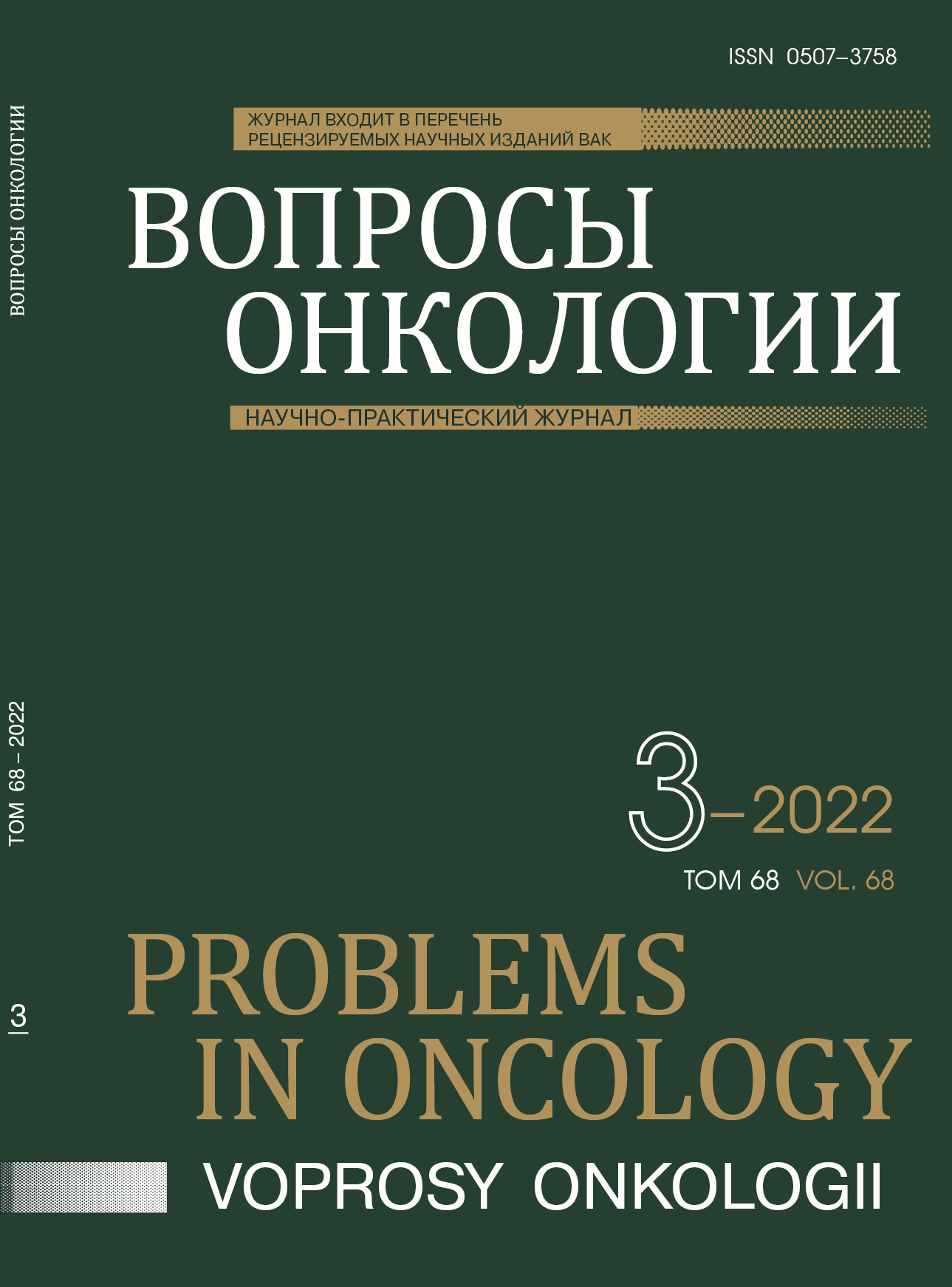Abstract
The article presents literature data with an assessment of histological features, molecular biological types of breast cancer, namely their impact on the risk of relapse or detection of R1. The volume of surgical intervention and the risk of relapse are considered. The age of the patients, histological characteristics (multicentricity, multifocality), mutations on the risk of relapse were analyzed. It is known that when a recurrence of breast cancer is detected, the risk of further metastasis increases, and the overall survival rate decreases accordingly. The early and late recurrences of breast cancer were analyzed.
References
Каприн А.Д., Старинский В.В., Шахзадова А.О. Состояние онкологической помощи населению России в 2019 г. Москва, 2020 [Kaprin AD, Starinsky VV, Shakhzadova AO. The state of oncological care for the population of Russia in 2019. Moscow, 2020 (In Russ.)].
Corradini AG, Cremonini A, Cattani MG et al. Which type of cancer is detected in breast screening programs? Review of the literature with focus on the most frequent histological features // Pathologica. 2021;113(2):85–94. doi:10.32074/1591-951X-123
Desmedt Ch, Zoppoli G, Sotiriou Ch, Salgado R. Transcriptomic and genomic features of invasive lobular breast cancer // Seminars in Cancer Biology. 2017;44:98–105. doi:10.1016/j.semcancer.2017.03.007
Adachi Y, Ishiguro J, Kotani H et al. Comparison of clinical outcomes between luminal invasive ductal carcinoma and luminal invasive lobular carcinoma // BMC Cancer. 2016;16:248. doi:10.1186/s12885-016-2275-4
Chamalidou C, Fohlin H, Albertsson P et al. Survival patterns of invasive lobular and invasive ductal breast cancer in a large population-based cohort with two decades of follow up // Breast. 2021;59:294–300. doi:10.1016/j.breast.2021.07.011
Lu K, Wang X, Zhang W et al. Clinicopathological and genomic features of breast mucinous carcinoma // Breast. 2020;53:130–137. doi:10.1016/j.breast.2020.07.010.
Sharma P. Biology and Management of Patients With Triple-Negative Breast Cancer // The Oncologist. 2016;21(Issue 9):1050–1062 doi.org/10.1634/theoncologist.2016-0067
Zein DE, Hughes M, Kumar Sh et al. Metaplastic Carcinoma of the Breast Is More Aggressive Than Triple-negative Breast Cancer: A Study From a Single Institution and Review of Literature // Clin Breast Cancer. 2017;17(5):382–391. doi:10.1016/j.clbc.2017.04.009
Ignatov A, Eggemann H, Burger E, Ignatov T. Patterns of breast cancer relapse in accordance to biological subtype // J Cancer Res Clin Oncol. 2018;144(7):1347–1355. doi:10.1007/s00432-018-2644-2
Moossdorff M, Vane MLG, Van Nijnatten TJA et al. Conditional local recurrence risk: the effect of event-free years in different subtypes of breast cancer // Breast Cancer Res Treat. 2021;186(3):863–870. doi:10.1007/s10549-020-06040-3
Quan ML, Paszat LF, Fernandes KA et al. The effect of surgery type on survival and recurrence in very young women with breast cancer // J Surg Oncol. 2017;115(2):122–130. doi:10.1002/jso.24489
André C, Holsti C, Svenner A et al. Recurrence and survival after standard versus oncoplastic breast-conserving surgery for breast cancer // BJS Open. 2021;5(Issue 1). doi:10.1093/bjsopen/zraa013
Pilewskie M, Morrow M. Margins in breast cancer: How much is enough? // Cancer. 2018;124(7):1335–1341. doi:10.1002/cncr.31221
Ozturk A, Ilgun S, Ucuncu M et al. The effect of multifocal and multicentric tumours on local recurrence and survival outcomes in breast cancer // J BUON. 2021;26(1):196–203.
Djordjevic-Jovanovic L, Karanikolic A, Bojic T et al. Characteristics and outcomes of patients with multifocal/multicentric and unifocal breast cancer // J BUON. 2017;22(3):652–657.
Cowend M, Jacquemier J, Nonvenaeghel G. Local and distant recurrence after conservative management of «very low risk» breast cancer are dependent events: a 10 year follow–up // Int. J. Rad. Oncol, Phys. 1998;41(5):801–807. doi: 10.1016/s0360-3016 (98) 00144-8
Криворотько П.В., Семиглазов В.В., Канаев С.В и др. Риск местного рецидива после органосохраняющих операций на молочной железе // Вопросы онкологии. 2011;57(4):627–635 [Krivorotko PV, Semiglazov VV, Kanaev SV et al. The risk of local relapse after organ-preserving operations on the mammary gland // Voprosy onkologii. 2011;57(4):627–635 (In Russ.)].
Надыров Э.А. Прогностическое значение клинико-морфологических и иммуногистохимических показателей при раке молочной железы // Проблемы здоровья и экологии. 2008;18(4):56–59 [Nadyrov E.A. Prognostic value of clinical-morphological and immunohistochemical parameters in breast cancer // Problemy zdorovya i ecologii. 2008;18(4):56–59 (In Russ.)].
Bense RD, Qiu Si-Qi, Vries EGE et al. Considering the biology of late recurrences in selecting patients for extended endocrine therapy in breast cancer // Cancer Treat Rev. 2018;70:118–126. doi:10.1016/j.ctrv.2018.07.015
Leon-Ferre RA, Polley M-Y, Liu H et al. Impact of histopathology, tumor-infiltrating lymphocytes, and adjuvant chemotherapy on prognosis of triple-negative breast cancer // Breast Cancer Res Treat. 2018;167(1):89–99. doi:10.1007/s10549-017-4499-7

This work is licensed under a Creative Commons Attribution-NonCommercial-NoDerivatives 4.0 International License.
© АННМО «Вопросы онкологии», Copyright (c) 2022
